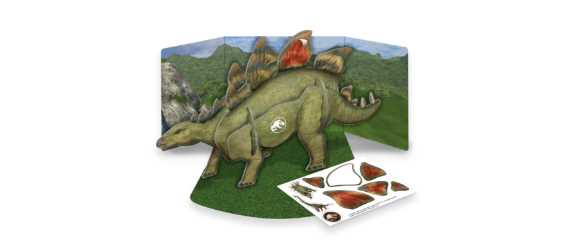
McDonald’s has always been known for its iconic Happy Meal toys. However, there has been a recent rumor circulating that the fast food giant is transitioning to paper toys instead of the traditional plastic ones. With increasing concerns about the environment and the impact of plastic on our planet, it wouldn’t be surprising if McDonald’s was exploring sustainable alternatives.
But is it true? Are McDonald’s toys really made of paper now? Let’s find out. While it’s true that McDonald’s is committed to reducing its environmental footprint, the company has not officially announced a switch to entirely paper toys. Instead, they have been making efforts to increase the sustainability of their toys by using more recycled materials and minimizing plastic waste.
McDonald’s has partnered with various organizations to implement eco-friendly practices throughout their supply chain. They are working towards using more sustainable materials for their toys, packaging, and promotional materials. This includes exploring alternative materials like paper and plant-based plastics, as well as finding ways to make their current plastic toys more recyclable.
So, while you may start seeing more paper-based elements in McDonald’s toys, it doesn’t necessarily mean that the toys are made entirely out of paper. The company is taking gradual steps towards a more sustainable future, but it will likely be a combination of materials rather than a complete transition to paper toys.
- The Debate Over McDonald’s Toys
- Plastic Toys and Environmental Concerns
- McDonald’s Response and Transition to Paper Toys
- Environmental Concerns
- Reducing Plastic Waste
- Working towards a Sustainable Future
- Transition to Paper
- Benefits of Paper Toys
- Customer Reactions
- Looking Ahead
- Benefits of Sustainable Toys
- Consumer Expectations
- Q&A:
- Are McDonald’s toys still made of plastic?
- Why did McDonald’s switch from plastic to paper toys?
- What are the benefits of using paper toys over plastic toys?
- Will McDonald’s start using paper toys in all their Happy Meals?
The Debate Over McDonald’s Toys
In recent years, there has been an ongoing debate surrounding the materials used in McDonald’s Happy Meal toys. Traditionally, these collectible toys have been made of plastic, which has raised concerns among environmental activists. They argue that the production and disposal of plastic toys have a detrimental impact on the environment.
Plastic Toys and Environmental Concerns
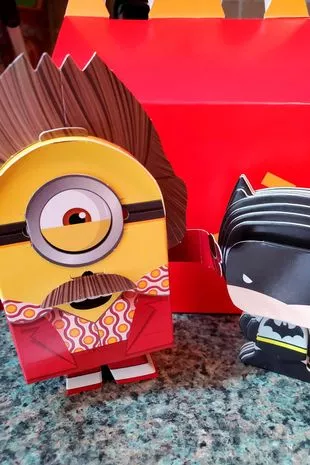
Plastic is a non-biodegradable material, which means it cannot be broken down by natural processes. As a result, plastic toys contribute to the growing problem of plastic waste in landfills and oceans. Furthermore, the production of plastic toys requires the use of fossil fuels, contributing to greenhouse gas emissions and climate change.
Environmental activists have been calling for McDonald’s to find alternative materials for their Happy Meal toys. They argue that using biodegradable or recyclable materials, such as paper, would help reduce the ecological impact of these toys.
McDonald’s Response and Transition to Paper Toys
Realizing the validity of these concerns and the need for more sustainable practices, McDonald’s has made changes to their toy production. In recent years, they have started transitioning from plastic toys to paper toys.
There are several advantages to using paper for Happy Meal toys. Firstly, paper is a renewable resource and can be easily recycled. This means that paper toys have a smaller carbon footprint compared to their plastic counterparts. Secondly, paper toys have the potential to be more interactive, allowing children to color and personalize them. This adds an educational and creative aspect to the toy, enhancing the overall value for the child.
| Advantages of Paper Toys | Disadvantages of Paper Toys |
|---|---|
| 1. Renewable resource | 1. Less durable |
| 2. Easily recycled | 2. Susceptible to water damage |
| 3. Interactive and creative | 3. Limited design possibilities |
However, there are also some drawbacks to using paper toys. They are generally less durable than plastic toys and can be easily damaged by water. Additionally, paper toys may have limited design possibilities compared to plastic toys.
In conclusion, the debate over McDonald’s toys has highlighted the need for more environmentally friendly options. While the transition to paper toys is a positive step towards sustainability, it is important to continue exploring and investing in alternatives that have minimal impact on the environment.
Environmental Concerns
There are growing concerns about the environmental impact of fast food restaurants, including McDonald’s, and their use of plastic in their packaging and toys. Plastic is a major contributor to pollution and is harmful to marine life when it enters the ecosystem.
In recent years, there has been a shift towards more environmentally friendly alternatives. McDonald’s has taken steps to address these concerns and reduce its environmental footprint. One of the initiatives that McDonald’s has introduced is using paper toys instead of plastic toys in their Happy Meals.
Reducing Plastic Waste
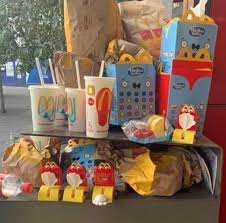
By replacing plastic toys with paper toys, McDonald’s is reducing the amount of plastic waste that ends up in landfills or the ocean. Paper is a more sustainable material as it is biodegradable and can be recycled. This change helps to minimize the environmental impact of the fast-food industry.
In addition to paper toys, McDonald’s has also made efforts to reduce the amount of plastic used in their packaging. They have switched to using paper-based, renewable materials for their cups and containers, and have also started offering paper straws instead of plastic straws in some locations.
Working towards a Sustainable Future
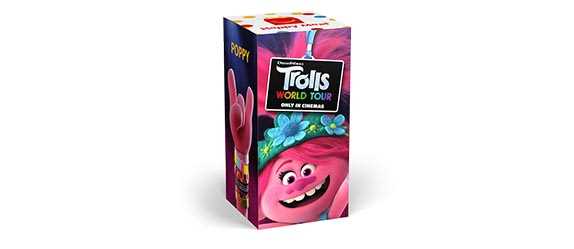
McDonald’s recognizes the importance of sustainability and is actively working towards a more sustainable future. They have set goals to make all their packaging renewable and recyclable by 2025 and to source all their food and packaging sustainably.
By implementing these changes and prioritizing environmental concerns, McDonald’s is showing a commitment to reduce its carbon footprint and contribute to a cleaner and healthier planet.
- Introduction of paper toys as an alternative to plastic
- Switching to paper-based, renewable materials for packaging
- Using paper straws instead of plastic straws
- Setting goals for renewable and recyclable packaging by 2025
- Prioritizing sustainable sourcing of food and packaging
Transition to Paper
The decision to transition McDonald’s toys to paper is part of the company’s larger commitment to sustainability and reducing plastic waste. Plastic toys have long been a staple of fast food chains, but in recent years, there has been a growing movement to find more environmentally friendly alternatives.
By switching to paper, McDonald’s aims to decrease its carbon footprint and lessen the impact on the environment. Paper is a renewable resource that can be easily recycled, making it a more sustainable choice compared to plastic. The transition to paper toys aligns with McDonald’s goal of using more environmentally friendly materials throughout its business operations.
Not only is paper a more sustainable choice, but it also offers new possibilities for creativity and design. Paper toys can be easily customized and decorated, allowing children to engage in hands-on play and personalization. This shift towards paper toys opens up opportunities for collaboration with artists and designers to create unique and engaging toy designs that capture the imagination of children and adults alike.
Although the transition to paper toys may take some adjustment for McDonald’s and its customers, it is a step towards a more sustainable future. By embracing innovative and eco-friendly materials, McDonald’s is demonstrating its commitment to reducing waste and promoting environmental responsibility.
Overall, the transition to paper toys represents a positive shift in the fast food industry’s approach to toy manufacturing. It sets an example for other companies to follow suit and prioritize sustainability in their product offerings. Despite the challenges that may arise, the move towards paper toys is an important step in the right direction for McDonald’s and the environment.
Benefits of Paper Toys
- Environmental Friendly: Paper toys are mostly made from recycled materials, making them a sustainable and eco-friendly alternative to plastic toys.
- Safe for Children: Paper toys are generally safe for children to play with, as they do not pose a choking hazard like small plastic parts.
- Creative Development: Paper toys encourage children to use their imagination and creativity to assemble and decorate them, fostering their cognitive and motor skills.
- Low Cost: Paper toys are often inexpensive, making them an affordable option for families on a budget.
- Easy Customization: Paper toys can be easily customized with different colors, patterns, and designs, allowing children to personalize their toys according to their preferences.
- Learning Opportunities: Paper toys can be educational tools that teach children about shapes, colors, numbers, and even basic engineering principles.
- Portable: Paper toys are lightweight and easy to carry around, making them a convenient option for on-the-go entertainment.
- Collaborative Play: Paper toys can be assembled and played with together, promoting collaboration, teamwork, and social interaction among children.
- Recyclable: Once children have finished playing with paper toys, they can be recycled, contributing to waste reduction and a greener environment.
Overall, paper toys have numerous benefits for both children and the environment. They offer a safe, affordable, and creative play experience while also promoting sustainability.
Customer Reactions
McDonald’s recent decision to switch from plastic toys to paper toys has sparked mixed reactions among customers.
Some customers appreciate the move, as it aligns with their values of reducing plastic waste and being more environmentally friendly. They see it as a positive step towards reducing the company’s carbon footprint and addressing the global plastic pollution problem. These customers believe that paper toys are a more sustainable and responsible choice.
However, there are also customers who are not happy with the change. They argue that paper toys are less durable and less appealing to children. Some parents are concerned that paper toys may not last long, especially if they get wet or torn easily. They worry that the new toys might not provide the same level of entertainment and joy for their kids.
McDonald’s customers have been expressing their opinions on social media platforms. Many have taken to Twitter and Facebook to share their thoughts on the switch. Some individuals have applauded the company’s decision and have even shared ideas on how to further reduce waste in the fast-food industry. Others have voiced their disappointment and dissatisfaction, stating that they preferred the plastic toys and find the paper ones less enjoyable.
McDonald’s acknowledges the diverse opinions and is actively listening to customer feedback, taking it into consideration for future improvements. The company is committed to finding a balance between customer satisfaction and environmental sustainability.
| Pros | Cons |
|---|---|
| Reduces plastic waste | Less durable |
| Environmentally friendly | Less appealing to children |
| Positive step towards reducing carbon footprint | May not last long if wet or torn easily |
| Addresses global plastic pollution problem |
Looking Ahead
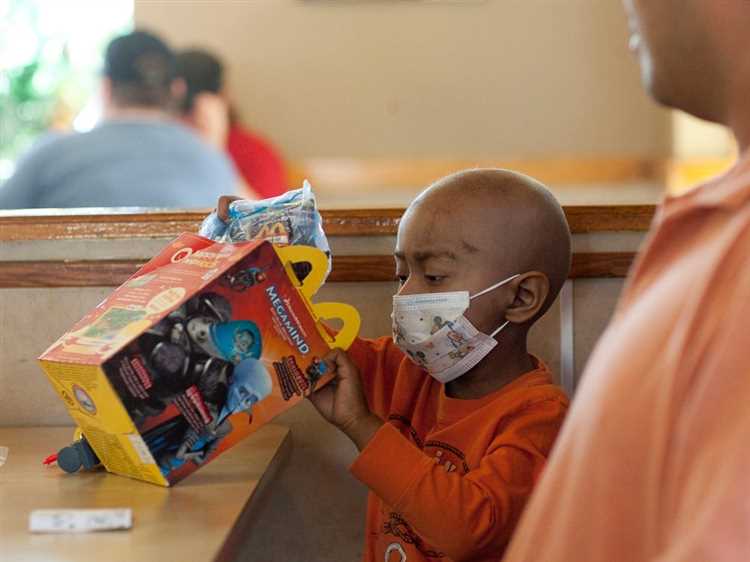
As the world becomes more conscious of the environmental impact of plastic, it is likely that more companies, including fast food chains like McDonald’s, will move towards using eco-friendly materials for their packaging and toys. While the switch to paper toys may be a step in the right direction, it is important for McDonald’s and other companies to continue exploring new ways to reduce waste and promote sustainability.
In the future, we may see McDonald’s toys made from even more sustainable materials, such as bioplastics or recycled materials. Companies might also introduce innovative designs that can be reused or repurposed, encouraging children to think about waste in a different way.
Benefits of Sustainable Toys
Making the shift to environmentally friendly toys can have several positive impacts. Firstly, it reduces the demand for virgin plastics, which helps reduce the amount of plastic waste in landfills and oceans. Secondly, it teaches children about the importance of sustainability and taking care of the planet from a young age. By choosing toys made from eco-friendly materials, parents can instill in their children the values of reducing, reusing, and recycling.
Consumer Expectations
As consumers become more aware of environmental issues, they are increasingly expecting businesses to take responsibility and make sustainable choices. By adopting eco-friendly practices, McDonald’s can meet customer expectations and enhance its brand image as a socially conscious company. This can attract new customers and retain existing ones who appreciate the company’s commitment to the environment.
Looking ahead, it is clear that the future of McDonald’s toys and packaging lies in sustainable materials. By staying ahead of the curve and continuously investing in innovative solutions, McDonald’s can make a significant impact in reducing plastic waste and promoting a greener future.
Q&A:
Are McDonald’s toys still made of plastic?
Yes, McDonald’s toys are still made of plastic.
Why did McDonald’s switch from plastic to paper toys?
McDonald’s made the switch from plastic to paper toys as part of their sustainability efforts and to reduce their environmental impact.
What are the benefits of using paper toys over plastic toys?
Using paper toys instead of plastic toys has several benefits. Paper is more environmentally friendly and easier to recycle. It also reduces the use of single-use plastics, which can be harmful to the environment.
Will McDonald’s start using paper toys in all their Happy Meals?
There are currently no plans to use paper toys in all the Happy Meals. The switch to paper toys may be implemented gradually and could vary depending on the region or country.